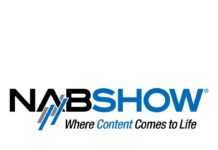
(By Bob McCurdy) I was at the Association of National Advertisers Convention earlier this week, it was chock full of terrific insights but a couple of stats referenced on stage really stood out.
First, was the ANAs CEO’s statement at the beginning of the conference when he said, “Pardon my Brooklynese, but growth sucks.” He then referenced that 259 companies in the 2016 Fortune 500 had declining revenue growth, stating, “These depressing patterns are happening even with continued growth in media spending.”
Two questions for marketers: Where have the ad dollars been flowing and what’s the definition of insanity?
We have long championed the importance of a well-rounded media campaign. “Everything in moderation” applies to both life and media mixes but “balanced” is not a word that applies to most ad campaigns today.
On the flight home last night, I began jotting down how radio could bring back media campaign equilibrium:
Speed: Speed enables advertisers to respond quickly to competitive business challenges and opportunities.
Along with billboards, radio remains the top out-of-home media as the majority of mobile usage still occurs in-home.
Listeners are not only exposed to but respond to radio commercials: The audience throughout the average commercial break is 93% of the audience that immediately precedes the commercial break according to a study that analyzed 18 million commercial breaks and radio’s ROAS according to Nielsen averages about $10 for every $1 invested.
Listeners multi-task but unlike TV, they are not multi-tasking with other media.
Low cost for high reach remains an elusive media proposition.
Enables advertisers to maintain “share of voice” in heavily advertised categories. “Recalled” products/services are bought more often.
Media “multiplier.” In addition to generating considerable sales impact on its own, radio also serves to enhance the effectiveness of other media. Econometricians refer to this as “indirect” impact.
Reaches the light users of the Internet and TV.
Contributes to “encoding variability.” Consumers exposed to the same message in different media encode/process the messaging in a deeper, more complex manner.
Different context of exposure. In-car. Not distracted. Usually alone. Reaches consumers in locations other media do not and when they can do something about what they just heard.
Is a “transition” medium, reaching consumers as they segue from one life role to another with different needs/responsibilities.
Provides unmatched intimacy, enabling listeners to share the same moment in time with another human being as “whispering” in our ears. Allows listeners to be alone without being lonely.
Connects listeners to their “wider world.” Online operates more within people’s immediate social network, allowing them to stay in touch with friends and defined communities of interest. Radio connects people with their wider network, their local community or broader community of interest, their “wider world.”
Offers onsite activation, a radio USP. TV, Google, and Facebook can’t.
Listening is done live and is DVR-proof. Can close your eyes but not your ears.
According to a CRE study earlier this year, TV viewer’s eyes are on screen only 39% of the time during a commercial break. They are out of the room 21% of the time and 40% of the time they are multi-tasking with a second screen. It’s audio that commands their attention and brings their eyes back to the screen.
Most advertising serves to “remind” and not “teach.” Radio’s ability to generate affordable brand “presence” is among the best, enabling advertisers to keep their “product” on “the shelf” and not out of mind.
Personalities are the campfire storytellers of 2017. Few media options today have the impact of a personality endorsement.
Performance in Nielsen’s Commspoint channel planning tool is outstanding. Buck-for-buck out of the 71 media channels evaluated, radio usually ranks near the top when reach and efficiency are considered.
Positively influences the five key brand health metrics: awareness, intent, consideration, affinity, and advocacy according to client specific studies conducted by Katz/OTX.
Generates “convergent validity”: i.e. heard the message elsewhere so must be true, as well as delivering a “reinforcing” message or another reason to “believe.”
Radio’s relative power to impact sales is greater than its relative cost — Nielsen’s ROAS studies.
Promotes online conversion: According to a recent study by Sequent & Partners and the RAB, radio drove a +29% increase in Google search, which supports previous research by Nielsen.
More consumers turn to radio each week than any other ad vehicle.
Imagery/emotional transfer: There comes a point in many TV campaigns when audio alone can deliver the marketing impact of a television commercial much more efficiently.
These radio benefits are the ones that came to me at 30,000 feet last night. Let’s get in front of the right people and provide them with a rationale to bring back a little more media mix symmetry and, along with it, some “growth.”







